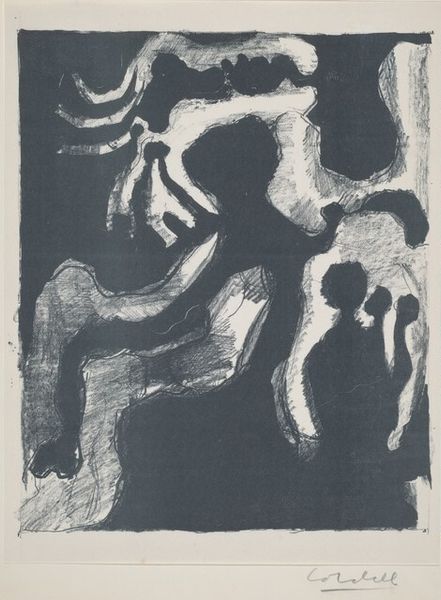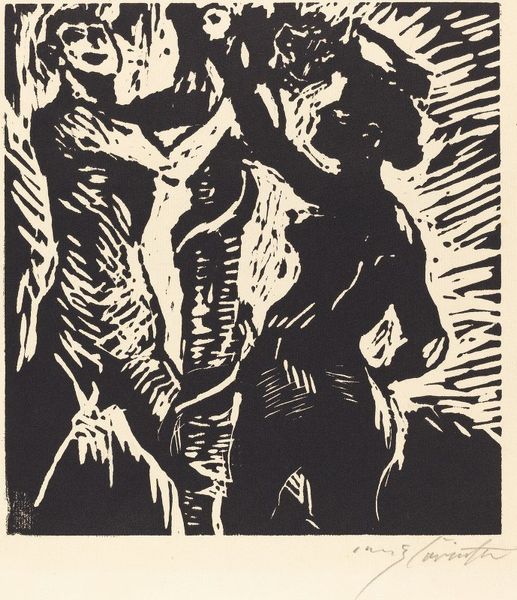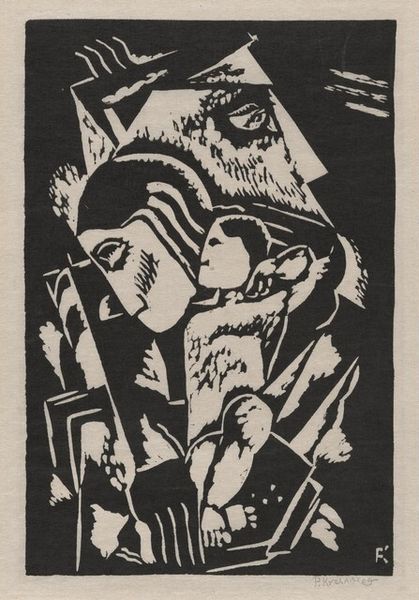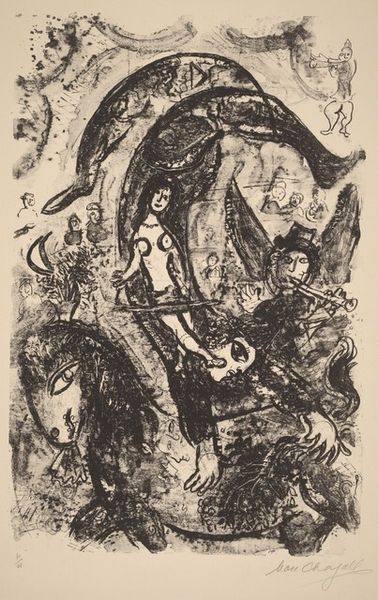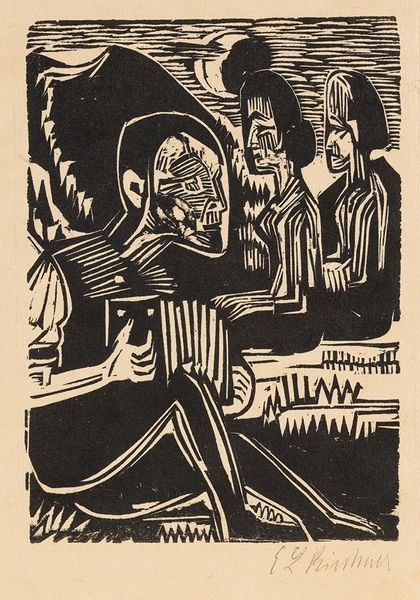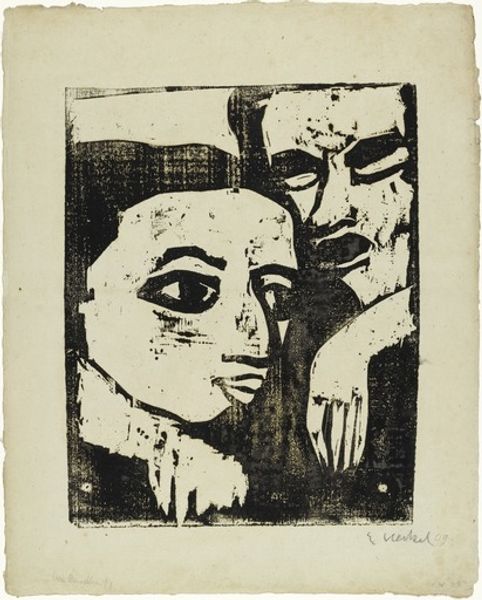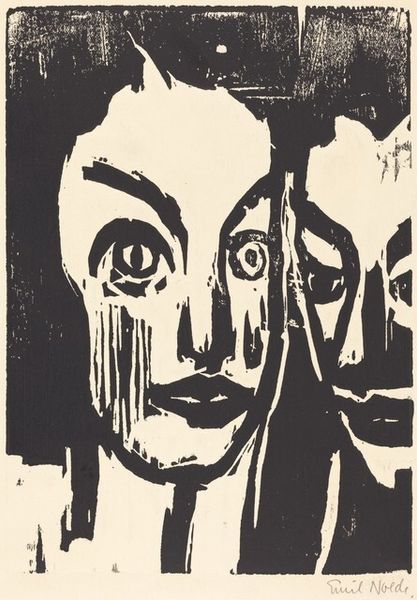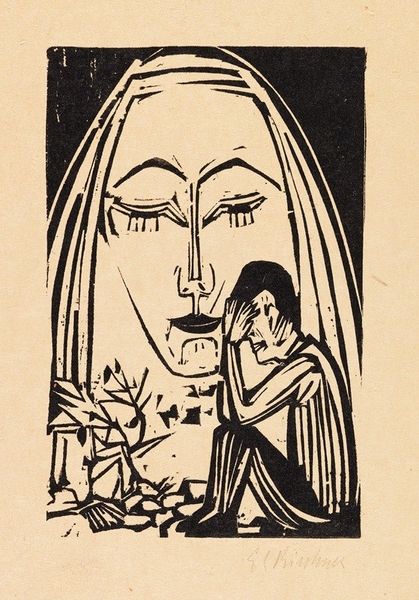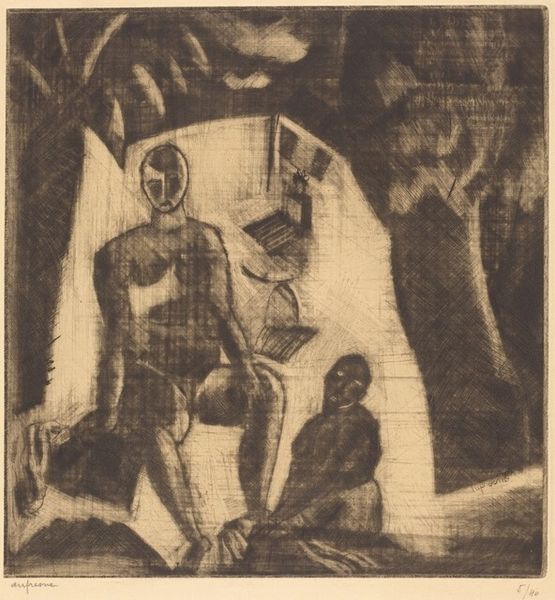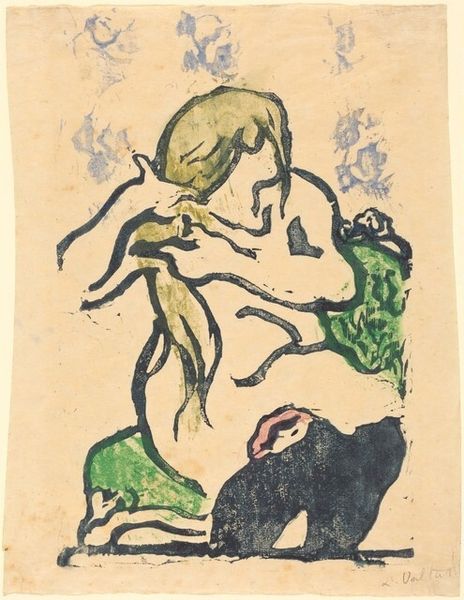
graphic-art, print
#
graphic-art
# print
#
caricature
#
figuration
#
expressionism
#
monochrome
Copyright: Public Domain: Artvee
Curator: It feels charged with such dramatic contrasts. The stark monochrome palette gives it an intense, almost claustrophobic quality. Editor: Yes, this is "Milenci", or "Lovers," a 1925 print by the Slovak artist Mikuláš Galanda. Galanda, alongside Ľudovít Fulla, was at the forefront of the Slovak Modernist movement in the interwar period. They brought progressive artistic ideals into the politically-charged environment of the time. Curator: That certainly comes through. The sharp angles and heavy black lines seem to carve the figures out of the background. The simplified forms push toward abstraction, but the expressions, particularly on the face of the figure on the bottom left, keep it anchored to the representational. Editor: Galanda aimed to depict universal human themes with the simplicity of folk art infused with modern artistic expression. Notice how Galanda synthesizes various influences, moving towards his own style: the angularity of Expressionism, Cubist reduction, all in service of portraying this almost dreamlike encounter. There's an unease created not only by the use of high contrast but also by the unusual placement of figures and the background which reminds one of a theater set. It brings the avant-garde to Bratislava. Curator: The composition creates such a narrative tension, too. There's a strange spatial relationship between the looming man in the foreground and the smaller figure seemingly running away in the background, under what looks like heavy rain. Is the latter perhaps fleeing from the couple, or is it merely another representation of the anxieties present within relationships? Editor: Exactly. By presenting themes of modern life through a progressive aesthetic language, he implicitly critiqued conservative social structures and their limitations on personal freedom. What are the constraints? This graphic print asks it through abstraction, the choice of figuration, and a somewhat stark contrast of values. Curator: Seeing how Galanda synthesizes all of these modernist styles—Expressionism, Cubism, touches of folk art—to not only capture a distinct time and place, but also communicate deep anxiety and longing is a reminder of the power of those intense blacks and whites. Editor: Yes, Galanda presents a compelling vision of his society. And for that, he's left us with a potent glimpse into the complicated world of interpersonal relationships during a pivotal time of change in Slovakia and abroad.
Comments
No comments
Be the first to comment and join the conversation on the ultimate creative platform.
